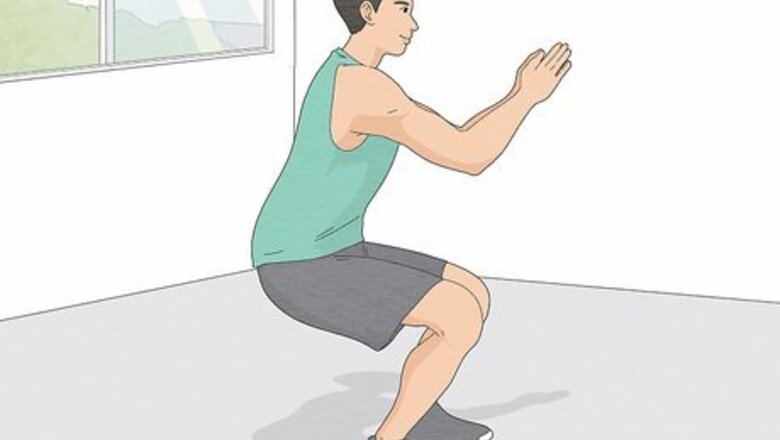
views
Do squats, lunges, leg extensions, leg curls, and dead lifts to get bigger legs. Certified personal trainer Danny Gordon recommends “8 to 10 repetitions” and “2 to 3 sets” of each exercise for the best results. Build healthy muscle by eating plenty of protein and high-calorie whole foods.
Exercising at Home
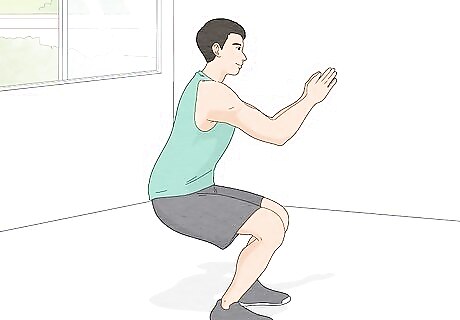
Squat your way to stronger thighs and glutes. Start by standing with your feet shoulder-width apart. Plant your weight onto your heels, then bend your knees and lower your butt until you're in a sitting position with your thighs parallel to the floor. Then, push back up with your heels until you're standing straight up again. Repeat this 10 times per set and start with 3 sets in each session―but gradually increase that to ensure you're consistently able to build muscle. Be sure to keep your core and glute muscles tight throughout the entire squat. Always keep your knees in line with your feet as you do this to avoid injury. To make this more challenging, try a split squat. Place your back leg on a sturdy box or crate that's about 15 in (38 cm) off the ground. Balance yourself on your front leg, then lower yourself into a squat until you're sitting on the box. Push yourself back up until you're standing. Repeat that for 10 reps, then switch to the other leg.
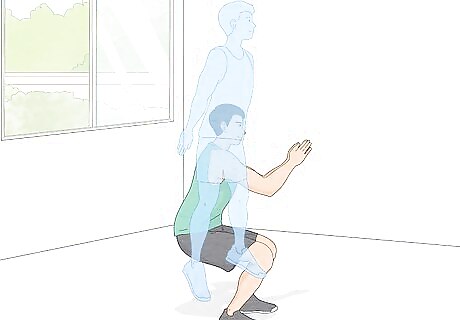
Add a jump to your squats to build muscle faster. Start by lowering yourself into a normal squat. However, when you go to straighten out, jump into the air as high as you can, swinging your arms down and straightening out your legs as you do so. Bend your knees slightly as you come back down to soften the landing. Keep your back straight and your chest up as you jump, and land back in the same position you started in.
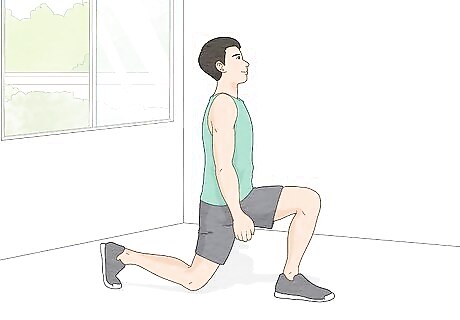
Do lunges to strengthen your quads, calves, and hamstrings. Lunges are a simple exercise that you can do anywhere. Stand normally, then take one big step forward with one leg. Bend your knees to lower yourself until your thighs are parallel to the floor then push back up with the heel of your front foot until you're standing again. Repeat this 10 times on that leg, then switch sides and lunge forward on the other leg. When you bend your knees, always keep your front knee lined up with your foot. If it goes too far forward, you could injure yourself. Also, keep your shoulders lined up with your hips and try not to bend forward. If forward lunges cause you knee pain, try reverse lunges by stepping backward instead of forward. They're a little gentler on your knees, but still a great workout. Try side lunges to add a little variety. Step out to the side and bend one knee, keeping the other leg straight. Then, repeat on the other side. EXPERT TIP Laila Ajani Laila Ajani Fitness Trainer Laila Ajani is a Fitness Trainer and founder of Push Personal Fitness, a personal training organization based in the San Francisco Bay Area. With over 10 years as a trainer and exercise specialist, Laila has expertise in competitive athletics (gymnastics, powerlifting, and tennis), personal training, distance running, and Olympic lifting. Laila is certified by the National Strength & Conditioning Association (NSCA), USA Powerlifting (USAPL), and she is a Corrective Exercise Specialist (CES). Laila Ajani Laila Ajani Fitness Trainer Maintain a steady, measured pace while performing lunges. When lunging, push your body down without any acceleration. Controlled movements during lunges help you perform the exercise correctly, strengthen your muscles, and avoid injuries.
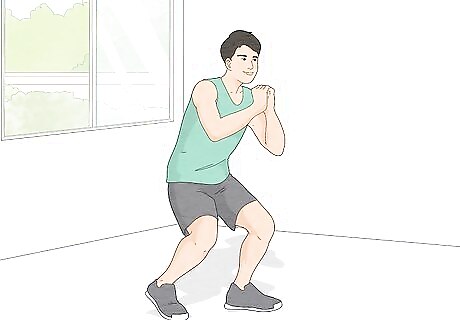
Get a full-body workout with a crab walk. To do a crab walk, lower yourself into a half-squat so your knees are bent at about a 45° angle. Clasp your arms in front of your chest, then take a big step out to the side. Then, step in with the other leg as well. Keep taking steps, moving from side to side, staying in a squat the whole time. Start by doing 5-10 steps, first in one direction, then the other, and work up from there. Be sure to lead with your knees, not your ankles!
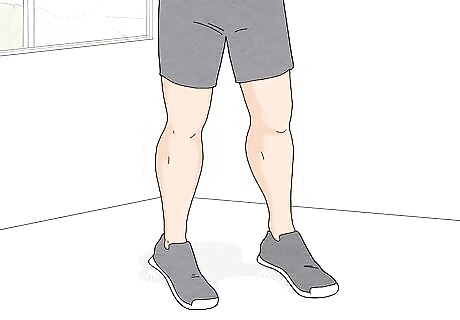
Work your lower legs with calf raises. Stand with your feet shoulder-width apart and place your hands on your hips or behind your head. Tighten your core muscles, then lift your heels off the floor so you're standing on your toes. Slowly lower yourself down—don't just drop down or you won't get the full benefit of the exercise. Once you get used to this, push yourself to make the exercise tougher by standing on one foot at a time!
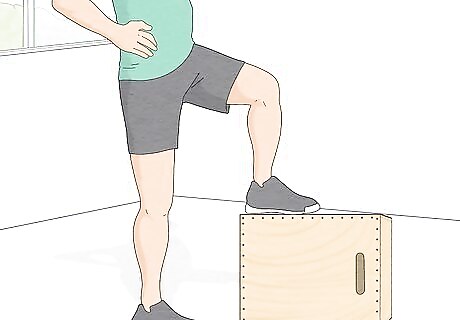
Try step-ups to strengthen your glutes and quads quickly. To do a step-up, all you need is something sturdy you can step onto, like a box or a bench that will hold your weight. Step onto the elevated platform with one foot and press down with that foot to lift your whole body. Keep your body straight—don't lean forward at the hips.
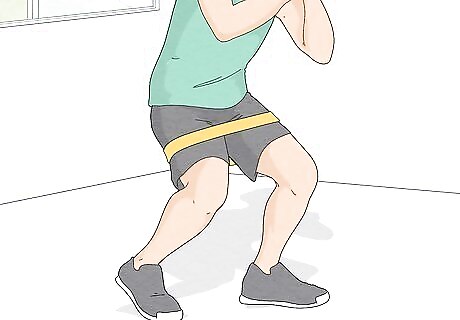
Add resistance bands to your workout to increase your gains. Bodyweight exercises like squats and lunges are a great way to start building muscle at home. Eventually, however, you have to increase the intensity of your workout in order for your muscles to keep growing. A resistance band will add an extra challenge to your workout! For instance, you might slip one resistance band around each of your feet, then pull upward with your hands while you're doing squats. Wrap the band below your knees to add an extra burn to your crab walk. For a sitting calf workout, put the band around your ankles, then slowly pull your feet apart as far as you can.
Building Muscle at the Gym
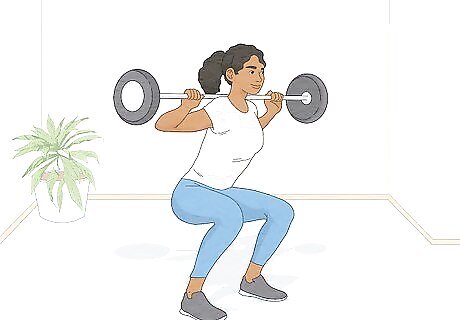
Do barbell squats. This is the single best exercise you can do to get big, thick thighs, since it engages the most muscle fibers in the area. Hold a barbell bearing weight you can lift for 10-12 reps. Stand with your feet shoulder-length apart. Bend your knees and squat so that your thighs are parallel to the floor. Hold the squat for 10 seconds. Push back up. Repeat 10-12 times for 3 sets.
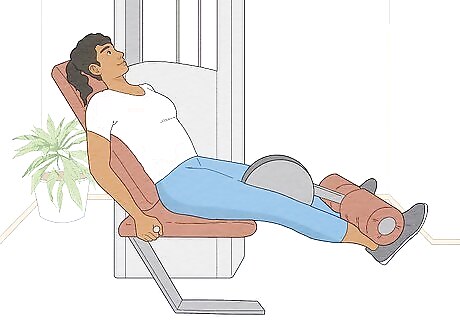
Do leg extensions. Load the leg extension machine with the heaviest amount of weight you can lift for 10 or so reps. Sit on the leg extension machine with your knees bent and your feet under the lower bar. Straighten your legs to lift the weight, then lower it. Repeat 10 - 12 times for 3 sets.

Do standing leg curls. You'll need to use a leg curl machine that allows you to lift weights by attaching a cable to your ankle. Load the machine with as much weight as you can lift for 10 reps. Fasten the cable to your ankle with the harness. Grab the support bar with your hands. Bend your knee toward your butt to lift the weight. Straighten your knee and put your foot back on the ground. Repeat 10-12 times for 3 sets, then switch to the other leg.
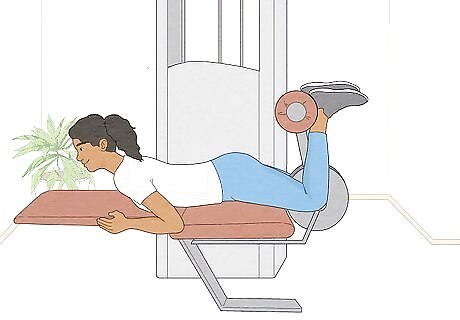
Do lying leg curls. This exercise pumps your leg muscles from a different angle. Load the machine with as much weight as you can lift for 10 reps. Lie face-down on the bench with your legs straight and your ankles under the lever. Bend your knees and lift the lever toward your body. Repeat 10 - 12 times for 3 sets.
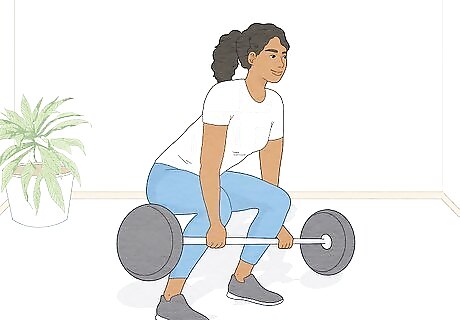
Do stiff-legged deadlifts. This exercise works your hamstrings, creating thicker legs. Load a barbell with as much weight as you can lift for 10 reps. Stand with your feet shoulder width apart. Bend at the waist, keeping your legs straight, and grasp the barbell with your hands. Keeping your legs stiff, lift the barbell to your thighs. Lower the barbell back to the floor. Repeat 10-12 times for 3 sets.
Using Techniques That Build Muscle
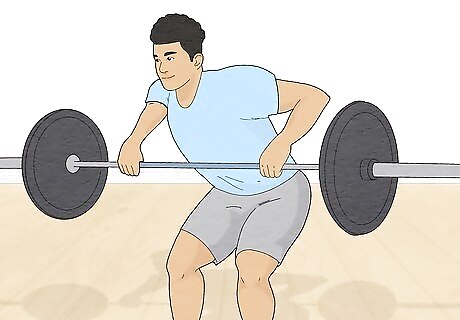
Focus on intensity. Even if you do all the exercises listed with religious regularity, you're not going to get bigger legs unless you make your workouts as intense as you can stand. In order for muscle to build effectively, you need to break down the fibers and have them build back up stronger and bigger. Doing this requires working out as hard as you can, every time. For each exercise, use as much weight as you can lift using the correct form for about 10 reps. If you can lift the weight easily for 15 reps, it's too light. If you can't lift it more than 5 times, it's too heavy. As the weeks go on, you'll need to add weight to keep up the intensity. Your muscles will stagnate if you don't lift more as they get stronger and bigger.
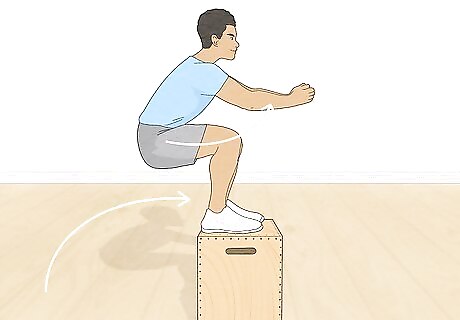
Exercise explosively. Doing the exercises quickly and with explosive energy, rather than slowly, builds muscle faster. You'll also be able to do more reps this way. Instead of working out slowly, increase the intensity by going through your sets as quickly as possible.

Don't plateau. It's important to change up your workout routine every other week so that your muscles don't get so used to doing the same exercises that they stop growing. Keeping your muscles in a state of "shock" will force them to continue the process of breaking down and building back up ever bigger and stronger. If you do a hard workout that includes squats, leg extensions, and leg curls one week, switch to stiff-legged deadlifts, lying leg curls and squats the next week. Adding weight is another way to keep from plateauing, so make sure you don't stagnate at a weight that's too light.
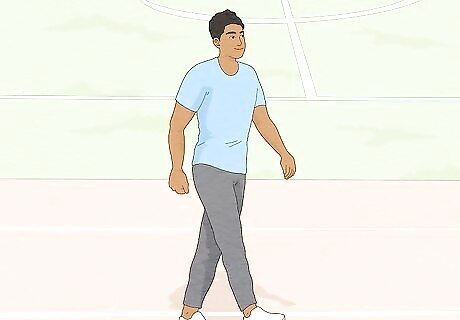
Take it easy between workouts. Your muscles need time to rest and repair when you aren't working out. You can keep exercising, but don't do anything that's too strenuous for your legs. Try swimming, walking, or playing basketball or tennis if you want to work out between leg workouts. Make sure you get plenty of sleep so your body has time to mend.
Eating to Get Bigger
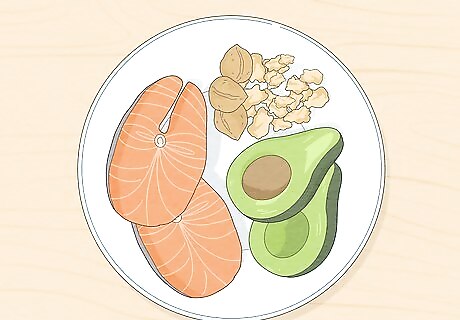
Eat high-calorie whole foods. You're going to need a lot of calories to fuel the growth of your leg muscles, which are some of the largest in your body. Eat big meals filled with high quality foods that nourish your body and keep you full and satisfied. Meat, whole grains, beans, vegetables, fruits, and nuts are good foods to consume when you're in a muscle-building program. Eat more than you think you need. During an intensive workout program you are going to need a lot of calories, and you'll probably need to eat at least 5 big meals a day. Avoid empty calories from fast food, cakes, cookies, chips, and other snack foods that will make you feel run down instead of energized.
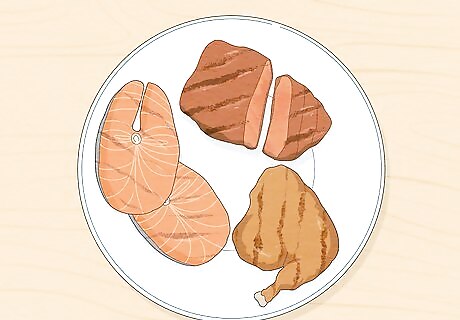
Eat plenty of protein. Protein is essential to building healthy muscles, so make sure you're getting a lot of it at every meal. Beef, pork, chicken, fish and lamb are all fine choices. Eggs and beans are good substitutes for those who don't eat a lot of meat.
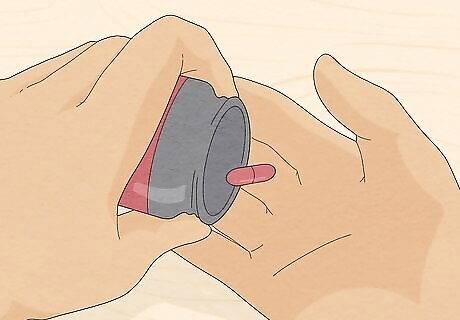
Try creatine supplements. Some people find that they can accelerate the process of muscle growth by taking creatine. Creatine is a nitrogenous organic acid that occurs naturally in vertebrates and helps to supply energy to all cells in the body, primarily muscle. This is achieved by increasing the formation of adenosine triphosphate. Creatine comes in a powdered form. You mix it with water and drink it 2-3 times per day. Creatine is considered to be completely safe to use in doses of 20 grams (0.71 oz) for long periods of time. Always read the directions given.




















Comments
0 comment